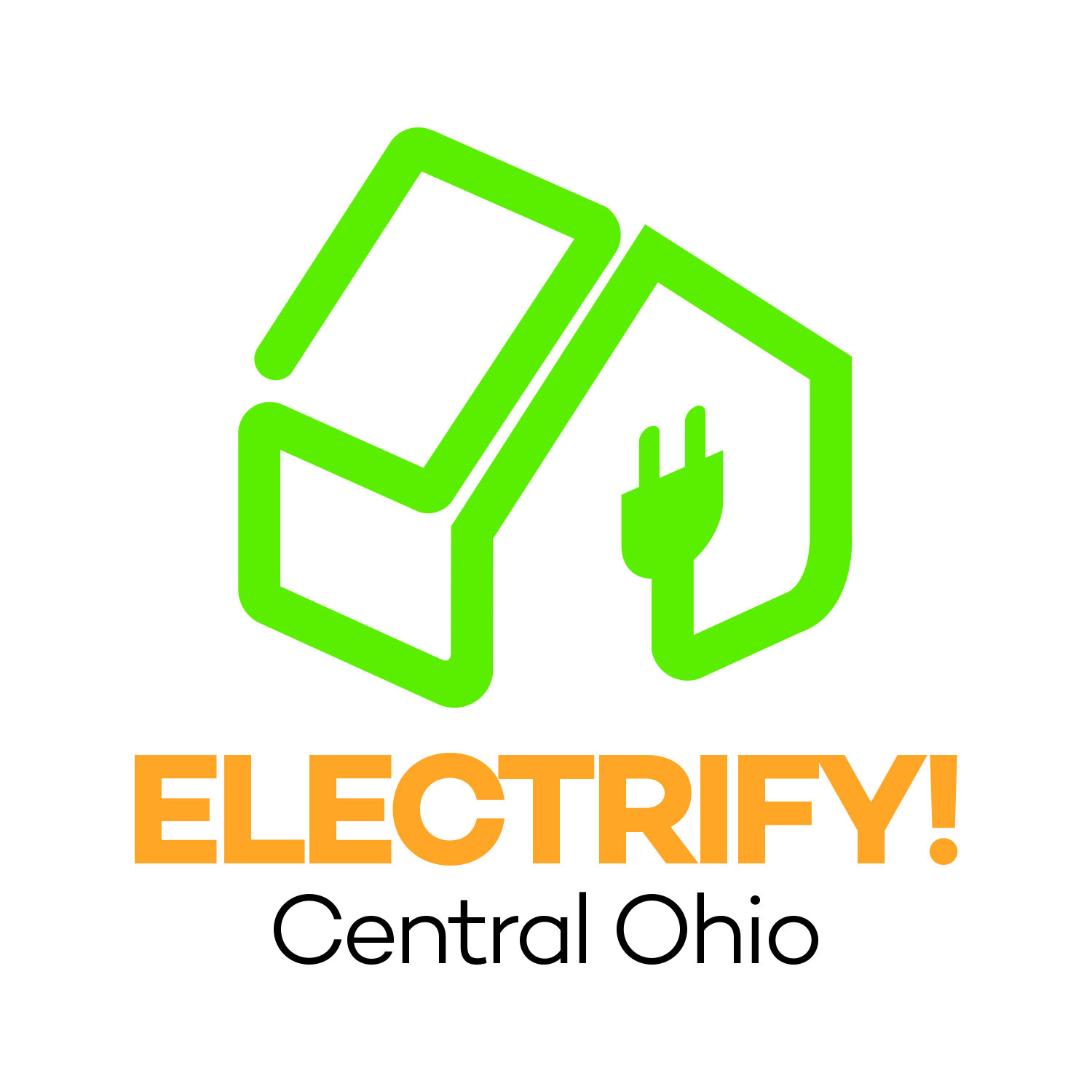What are the clean energy technologies I can use to reduce my carbon footprint?
If you’ve looked through our website, you know that clean electric technologies can let you take significant steps to reduce your carbon footprint. There are five key technologies that have evolved significantly over the last few decades to become more affordable and effective for everyday consumers:
Electric vehicles: It’s very clear at this point that EVs can significantly reduce greenhouse gas emissions even when you include emissions from the manufacturing process. But many people think of them as too expensive, and worry about access to charging. Fortunately, in recent years EVs have become much more broadly available and easier to charge on long-distance trips even as sticker prices have come down. Mainstream sources like Consumer Reports and Kelley Blue Book provide helpful primers on buying or leasing a new or used EV, and if you’re looking for some guidance from local EV owners here in central Ohio then the non-profit Drive Electric Columbus is a great place to start!
Heat pumps: You may not have heard of a heat pump before, but it’s the same technology that makes your refrigerator and air conditioning work: using refrigerant fluid to absorb heat and move it around. (In fact, you can use the same HVAC unit for home cooling and heating; it’s just A/C that includes a switch to let it work in reverse!) This approach can be used to capture heat from the air or ground and use it to heat your home or your water supply, even at winter temperatures that we would consider pretty chilly. In other words, heat pumps are a great way to avoid burning fossil fuels and creating greenhouse gases along the way. And over the last decade or so, significant improvements in the technology have resulted in the introduction of “cold climate” heat pumps that work well at temperatures as low as 5°F (or even lower). (A non-profit called the Northeast Energy Efficiency Partnerships maintains a robust database of cold climate heat pump models, including which are eligible for federal tax credits to reduce the cost of installation.)
The best part is that because heat pumps use the heat that’s already there, even in cold climates like Ohio they can be 2 to 3 times more efficient than technologies like gas or propane furnaces or water heaters, which always lose some energy as they burn their fuel. Heat pumps can be used in all sorts of homes, whether it’s for a ducted single-family home, a ductless “minisplit,” a window unit, or what looks like a traditional electric hot water tank – just one that uses a lot less electricity than the conventional version.
Smart thermostats: It’s true that getting a new car or a new HVAC system can be a big project. If you’re looking for an easier lift – but one that will make a real difference for your carbon footprint – then it’s worth considering a smart thermostat. These will automatically manage your central HVAC equipment to maintain your home at a comfortable temperature without heating or cooling empty spaces, with average energy savings of 8-10% for Energy Star certified models – and of course greenhouse gas reductions to match. Some smart thermostats can even be set to shift your A/C usage to times when the grid supply of electricity is greener (with programs like Nest Renew or Ecobee’s eco+), resulting in even greater climate impact.
Induction cooking: Or as we like to say, cooking with magnets! Cooking may not be one of the biggest energy uses in the home, but it can have some of the biggest health impacts: according to a 2022 study, 12.7% of current childhood asthma in the United States is attributable to gas stove use, which produces air pollutants like nitrous oxides, carbon monoxide, and formaldehyde. Electric ranges have long offered an alternative, but induction appliances are another option that also offer quick heating and precise temperature control for sophisticated home chefs, or parents who want to get water boiled for mac and cheese in record time. Traditional cooktops use a flame or a burner that radiates and conducts heat to your pots and pans. Induction cooking uses an electromagnetic field that transfers currents directly to the cookware placed on the glass surface. The heat is created from within the cookware itself; as soon as you remove it from a burner, the heating stops. This way, you can cook your food without the cooktop getting as hot as it would on a traditional gas or electric cooktop, and using less energy. Any pots or pans with a flat bottom that a magnet sticks to will work with an induction cooktop.
A quick plug (pun intended, of course): Electrify Central Ohio has both an indoor air quality monitor and a portable induction cooktop available to borrow if you want to check pollution levels in your kitchen or try clean induction cooking for yourself! And we’re also supportive of anyone who wants to stick with the tried-and-true option of traditional electric range – those can definitely be a good choice depending on your personal considerations, especially as market options for induction cooktops are still evolving.
Solar panels: There’s lots of information about these available across the Internet, which we won’t repeat except to say that as solar panel efficiency has gone up and cost has come down, it has become easier for many households – including in Ohio – to make a cost-effective long-term investment in their own renewable power supply. If you’re interested in home solar we can definitely talk options! Plus we always recommend you reach out to the experts at Solar United Neighbors of Ohio to access their Solar Help Desk and see if you might want to join one of their buying co-ops for a bulk discount!
